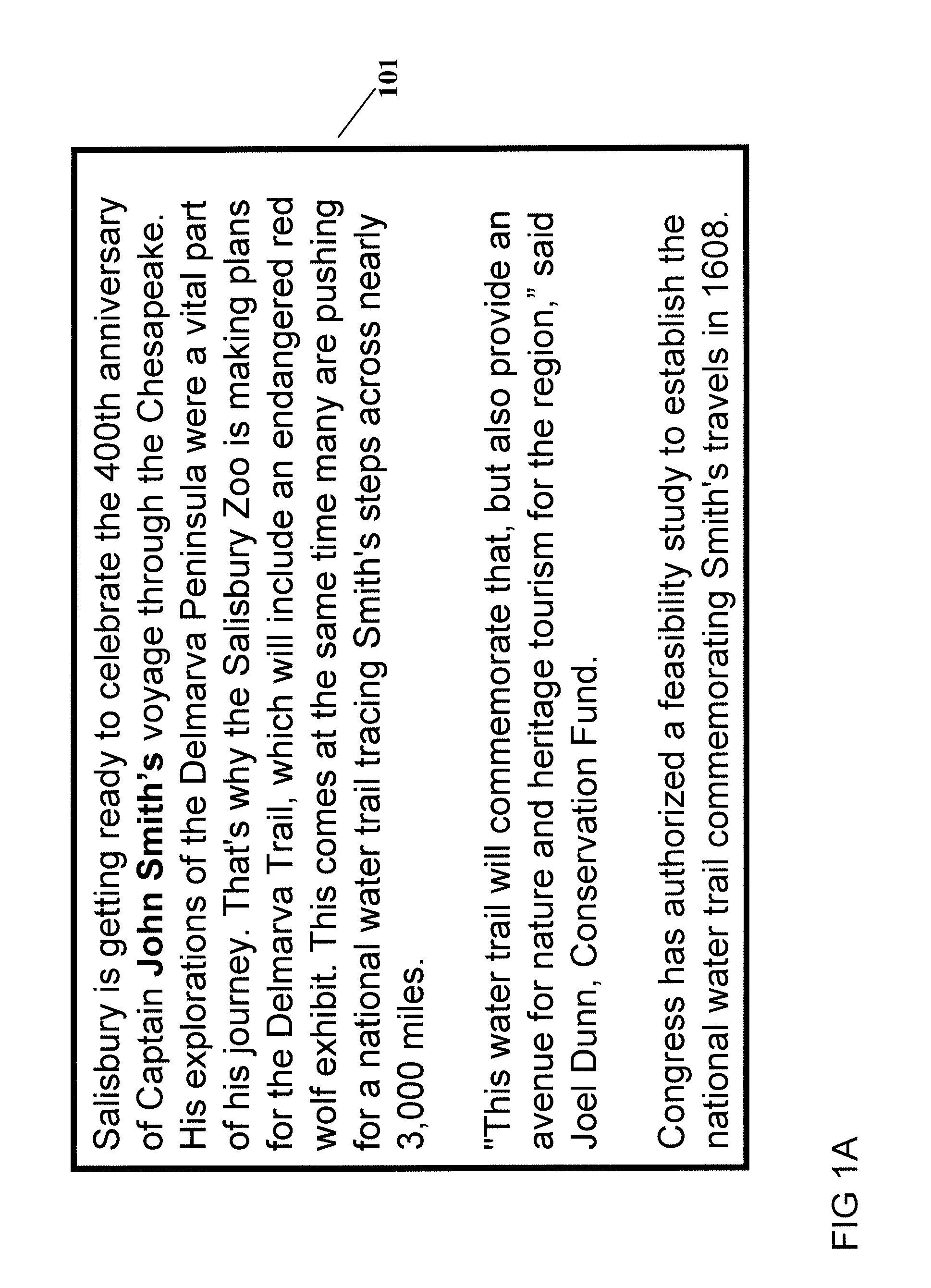Systems and methods for information integration through context-based entity disambiguation
- Summary
- Abstract
- Description
- Claims
- Application Information
AI Technical Summary
Benefits of technology
Problems solved by technology
Method used
Image
Examples
experiment 1
Reader Perception of Mary Crawford Throughout the Novel
This experiment focuses on how the character of Mary Crawford over the course of the novel, Mansfield Park, by Jane Austen, was perceived by the reader. Furthermore, the experiment was interested in observing how this perception changed over the course of the novel, specifically, chapter by chapter. Entity profile 308 were generated for Mary Crawford at the end of each chapter (non-cumulative) and was based on one or more of the following criteria:one or more mentions of an entity (i) Named mentions: Mary Crawford, Miss Crawford, (ii) Nominal mentions: his sister, dear girl, and (iii) Pronouns: she, herself;one or more descriptions or Modifiers of an entity, for example “poor Mary”, “too much vexed;”relations 306 to other Entities 304 in the text, for example Sibling_of: Mrs. Grant, Located_in: London;one or more events 307 the Entity 304 may be a participant in (usually subject or object role) e.g., “Miss Crawford accepted the ...
experiment 2
Mary Crawford as Perceived by Other Characters
This experiment focuses on Mary Crawford, but this time as she was perceived by Fanny and Edmund, the main characters in the novel Mansfield Park, by Jane Austen. The experiment restricted the analysis to the last ten chapters of the novel, because these are the chapters where there is general consensus that the opinions of Fanny and Edmund with respect to Mary Crawford undergo much fluctuation. To perform these experiments, the software 309 was reconfigured to include the correct context. In this case, two entity profiles 307 were generated for Mary Crawford per chapter, one reflecting the context needed to assess sentiment through the perspective of Fanny, and the other of Edmund. The context in each of these entity profiles 307 included:direct quotes attributed to either Fanny or Edmund: These were derived by selecting those quotes in Mary's profile that were about her and attributed to either Fanny or Edmund. For example, in chapter ...
PUM
 Login to View More
Login to View More Abstract
Description
Claims
Application Information
 Login to View More
Login to View More - R&D
- Intellectual Property
- Life Sciences
- Materials
- Tech Scout
- Unparalleled Data Quality
- Higher Quality Content
- 60% Fewer Hallucinations
Browse by: Latest US Patents, China's latest patents, Technical Efficacy Thesaurus, Application Domain, Technology Topic, Popular Technical Reports.
© 2025 PatSnap. All rights reserved.Legal|Privacy policy|Modern Slavery Act Transparency Statement|Sitemap|About US| Contact US: help@patsnap.com



